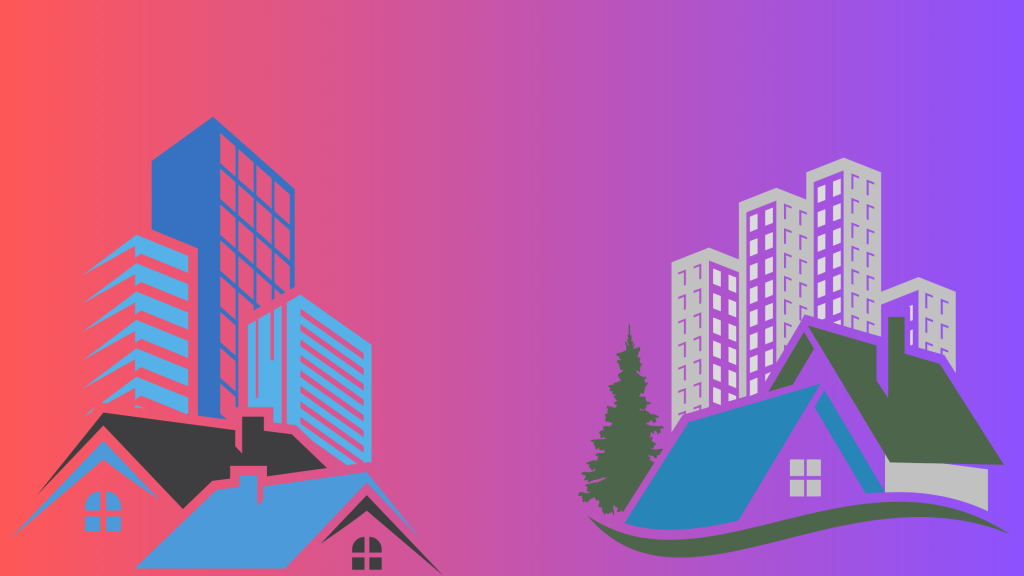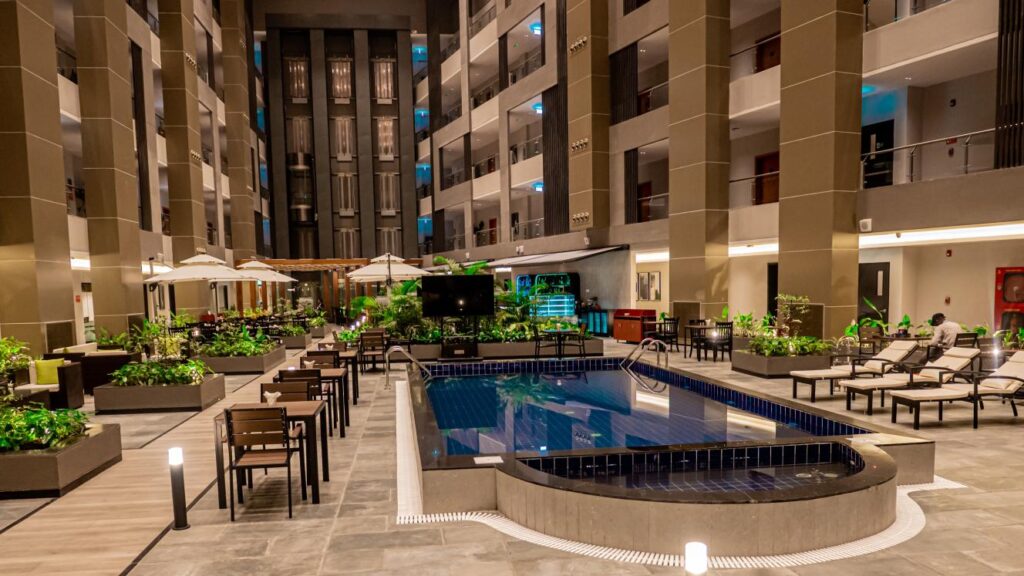Do you yearn for more than simply residing in your present city? As the new year dawns, it’s natural to reflect on how to flourish and soar to new heights. Our guide embarks on a quest to uncover the premier U.S. cities for young Multicultural professionals, where both personal and professional growth can thrive. Whether you’re just starting your journey in the U.S. or have been here for some time, this guide is tailored to you. So buckle up, grab a bite to eat, and join us on a road trip to your ideal urban destination.
How We Determined the Top U.S Destinations for Multicultural Professionals
We used the following criteria in compiling this list of the top 3 cities for Immigrant professionals in the U.S. to call home.
- Education, Healthcare Quality and Career Prospects
- Housing Market and Cost of Living
- Racial Diversity
- Social Networking
- Entertainment and Lifestyle
The U.S. cities are ranked based on the New American Economy Cities Index (2021) as well as some of our experiences residing in these cities. While these cities aren’t all golden, we will focus mainly on their strengths; only discussing cons if they significantly impact livability in the city. Without further ado, let’s check out our list in detail!
1. BALTIMORE, MARYLAND
Very few cities offer residents the chance to be at the centre of everything. With 586k residents spread across 81 Square Miles and settled in 278 neighbourhoods, Baltimore is home to academics, athletes, creatives, food lovers, and so much more. It’s the perfect blend of life at its finest!
Also known as Charm City, thanks to its rich history and hidden charm, Baltimore boasts a positively diverse economy, manufacturing everything from electronics, processed foods, and paper to automobiles, steel, aircraft parts, and plastic products. But that’s just one component of Baltimore’s appeals.
Healthcare, finance, education, and insurance are significant services making Baltimore one of the top cities in the U.S. for immigrants to call home. But how does this translate into numbers?
Charm City in numbers
The numbers don’t lie. Baltimore holds a perfect score for job opportunities (5/5) on the New American Economy (NAE) 2021 charts, making it an excellent city for migrants because it’s easier to find jobs. And with a 66% employment rate as of 2020, it’s no surprise.
In addition, the city’s score for economic prosperity and livability is 5 out of 5. This means that migrants are employed in jobs that fully support them and their family’s need to succeed. A common fear of relocation is that families may be subjected to less than comfortable situations. Baltimore’s stats prove that you can expect a high quality of life, from housing to education to healthcare.
Baltimore’s civic participation numbers are the lowest, scoring 3 out of 5. This refers to how much residents are involved in the city’s public activities, such as voting, enlisted recruitments, and public service. While not necessarily a significant weakness, it could be improved upon and is the final factor contributing to Baltimore scoring 4.5 out of 5 on the socioeconomic scale.
Baltimore scores 4.25 out of a 5-point scale, excelling in economic prosperity and legal support categories. It scored 3 out of 5 for community efforts, however, showing that the city consults, supports, or collaborates with community groups on an average basis regarding policy decisions.
Education, Healthcare, and Career Prospects
Regarding education, Baltimore’s public school system ranks fifth overall. About 189,000 Baltimore residents have an associate degree or higher, indicating a good appreciation of academics in the city. Baltimore has several universities and medical facilities, like the Baltimore VA Medical Center, Johns Hopkins University, the University of Maryland, Baltimore County, and Mercy Medical Center, and two bioscience parks.
This also affects the Baltimore job market, as many city residents find employment with these institutions. There are other prospects, with 20,559 positions in port and logistics employment, 4,340 in life sciences, and 151,709 living wage jobs in the city. Baltimore has an unemployment rate of 7.2%, less than the U.S. national average of 8.7%, and an average annual salary of $62,510, more than the National Average of $56,310.
In a Nutshell, Baltimore is Thriving! The Job Market Here is Healthier Than Other Cities of Similar Size in the U.S. This Makes Baltimore One of the Top U.S Cities for Multicultural Professionals to Build a Successful Career.
Housing Market and Cost of Living
You can use two words to describe the housing market and cost of living in Baltimore; highly-affordable and low. Compared to other mid-Atlantic cities, you can live well for less in Charm City, ranking third in the country. Considering you’re an hour’s drive from Washington, D.C., it’s a dream. You are guaranteed to live comfortably with an annual salary of $49,761.60.
And if you’re looking to rent instead, ApartmentList puts the average rental price in Baltimore at $1,114/month for a one-bedroom apartment. To add to its complete livability, the local income tax in the city currently ranges between 2.25% and 3.20%.
Racial Diversity, Social Networking, and Fun activities
Baltimore hosts a lively scene rich in arts, music, & culture. You could visit the following:
- Walters Museum of Art
- Baltimore Museum of Art
- The American Visionary Art Museum
- Artscape (for talented up-and-coming artists)
- Fell’s Point Corner Theater, Single Carrot Theater, Centerstage, & Fluid Movement (for lovers of the theatre)
- Ottobar, Cat’s Eye Pub, and the Baltimore Symphony Orchestra (for casual and dedicated music lovers)
- The Baltimore Zoo & Baltimore Aquarium
Baltimore also has excellent recreation opportunities. You’ll find that the city has a solid infrastructure for bikers, and there’s the option to take up kayaking if you fancy something new and unique, thanks to the Inner Harbor’s access to water.
There are many parks, from the Baltimore Conservatory to Patterson Park and Sherwood Gardens. All these options come with the opportunity to network with the city’s 375,000+ substantial Black population, of which approximately 10,000+ are African immigrants (as of 2020).
Antietam & Harpers Ferry will meet your tastes if national parks are more your speed.
The dating life in Baltimore is fair. According to the Reddit sub, r/baltimore, a now-deleted account had this:
What’s in store for Baltimore?
Baltimore’s population has steadily increased in the last decade, growing by an estimated 8.3% between 2010 and 2019. Its median household income and poverty rates have increased and decreased, respectively (5.2% from 2010-2018 and dropping by 9.1% from 2010-2018). The crime rate has also dropped by 23.6% from 2010-2018.
The Federal Open Market Committee (FOMC) estimated that Baltimore’s GDP will see a 2.8% increase in 2022, heeded by a 2.2% increase the following year. The real estate market also looks good, with a long-term profit potential of +1.71% in one year. WalletInvestor predicts that the city’s sales prices will increase by 15.1% in the next decade.
Jobs are on the rise, with the future job growth expected to be 25.1% over the next decade, especially in vital sectors like health care, business services, and health care, indicating good tidings in the coming years.
Baltimore is a city of dreamers and doers. It’s a place where the impossible becomes possible, and anything is achievable.
Oprah Winfrey
Hence, making Baltimore among our premier destinations for multicultural professionals
2. CHICAGO, ILLINOIS
Regularly considered the best city in the United States for migrants, Chicago started as a little trading post right at the bank of the Chicago River. Today, it is the third-largest in the country.
From the Windy City to Chi-town to the City of Big Shoulders or the Second City, Chicago goes by many nicknames, and although it is a vast city, it does come with a small-town feel. Chicagoans are said to be genuinely friendly and down-to-earth, a trait big city folks rarely exhibit. This goes a long way, especially if you need assistance in the city.
What’s more, Chicago is one of the best places for the millennial generation to live because there are a lot of millennials in the city, as well as being very accessible and diverse.
What else makes Chicago one of the best cities in the US for migrants? Let’s find out.
Chi-town in numbers
It’s straightforward to see why The Second City ranks highly.
With an overall score of 4.38 on the New American Economy Cities Index (the highest for 2021), Chicago is very welcoming and supportive of its migrant population. With a perfect score on policies, Chicago promotes inclusivity and financial empowerment for migrant communities, leading to over 10% of the 1.5 million+ population being involved in entrepreneurship. It also means Chicago is a great place to secure gainful employment as a U.S. migrant. While policy and overall scores may be high, Chicago’s socioeconomic scores could improve.
Chicago is on its way to becoming an unrivalled destination for migrants. With more focus on job opportunities and civic participation, it could do so in the future. It’s already shown that it takes its migrants seriously, and that’s a sign from the universe that The Second City could very well be your next home.
Education, Healthcare, and Career Prospects
Regarding jobs, Chicago has an incredibly diverse workforce, perhaps due to its size as a city. There isn’t a sector/ industry in the city that employs more than 14% of the workforce, meaning there is a job for everyone. The best part is that Chicago continues to grow, with about 50 new companies moving there in 2021. 70 other companies expanding existing footprints (20 of these businesses reside in the South or West side of the city. And more than 1,800 foreign-owned companies are based in the city.
Chi-town and top talents are attracted to each other, with high-paying jobs in high demand. The city is known for its marketing jobs, especially in the sports, entertainment, tech, and startup industries. According to Payscale, the average salary in Chicago is $76k per year, 22% higher than the national average.
Pro Tip: To secure a highly sought career in Chicago, you should leverage networking with associations specific to your chosen field, apply directly with the company you have in mind, or use a job recruiter. BuiltInChicago is also a tremendous job-hunting resource.Healthcare in the city is unparalleled, with Chicago boasting state-of-the-art medical campuses from Rush, Northwestern University, Advocate, and the University of Chicago.
Additionally, based on the 2019 National Health Index, Chicago ranks in the 99th percential of the country’s best cities regarding healthcare based on population health, access to care, the number of local specialists, and hospital quality.
However, the Chicago education system might be one of the city’s less refined strengths, as its public schools rank just above average.
There’s no cause for alarm, though, as the city has a 77% average graduation rate. Its college life is much better to write about, with top-ranking colleges, ample job opportunities, and a vibrant community college system.
Housing Market and Cost of Living
It has been an excellent time to buy or rent in Chicago for years, no matter what type of property you want. The median home value in the city for 2022 is $309,268, while the median home price is $320,000. The average rent price for a 1-bedroom is around $1,600.
While the cost of living is higher than the national average, living in Chicago is significantly less expensive than in other major cities. A one-bedroom in the city centre costs an average of $2,045.81, while units outside the centre cost $1,438.85. For a three-bedroom apartment, you’d typically pay $4,061.90 in the city centre and $2,547.73 outside of it.
A family of four would have an estimated monthly cost of $3,942.5 without rent, while a single person would spend an estimated $1,092.1 monthly (without rent).
Taxes, Chicago’s property taxes increase almost annually. Cook County has the second highest tax rate in the state, charging 2.52%. Chicago laws place rates on the property assessment value instead of the market value. Sales taxes of 10.3% apply, higher than most states. No income taxes are imposed.
Racial Diversity, Social Networking, and Fun activities
With approximately 47.73% of its population identifying as white, 29.22% identifying as Black or African American, Other races making up 10.55%, Asians and Native Americans making up 6.84% and 0.34%, respectively, Chicago has one of the most racially diverse populations in America.
Chicago has a great sports culture, an inclusive and world-class food scene, and breathtaking architecture. But that’s not all.
Living in the City of Big Shoulders gives you access to one-of-a-kind museums like the Art Institute of Chicago and the Field Museum of Natural History.
You also have three theatres to choose from, Goodman Theater, Steppenwolf Theater, and Chicago Theater. Chicago has one of the best music scenes in the country – Lollapalooza is something every music fan should add to their bucket list, not to mention the Chicago Blues Festival or summers filled with never-ending jazz festivals.
Beach lovers are included, having three to pick from; Montrose Beach, North Avenue Beach, and Oak Street Beach. Despite being an architectural powerhouse, Chicago also supports activities like biking, kayaking, and intramural sports (beach volleyball, kickball, and softball).
Chicago is great for singles, as according to a From Mars poll, the city is one of the ‘best cities to go on a date in’. With 40+ restaurants, two nightlife venues in the city per square mile and 42,000 Google searches for date ideas in Chicago between May 2021 to April 2022, it is no surprise.
The future of Chicago
The pandemic was rough on everyone, and for Chicago, it meant the loss of a high volume of jobs. However, the city has recovered 41% of those lost jobs and experienced job growth of 2.4% – 4.4% between 2021/22. By Q1 2024, Chicago is expected to recover all lost jobs with an average annual growth of 0.3% between 2022 and 2025.
While home prices increased by 4.9% from November 2021 to November 2022, the future of housing in Chicago will see home prices drop or stagnate as interest rates weigh on buyer demand. However, the low supply should keep prices from falling more than 3 to 5%.
And as Chicago continues to develop, its economy is expected to benefit from new technologies, increased investment in infrastructure, and the growth of the local startup scene. Additionally, the city will likely experience an influx of new residents and businesses due to its attractive cost of living, diverse culture, and strong economy.
In the words of Barack Obama, the U.S.’s 44th President (longtime Chicago resident)—
Chicago is a city where the practical and the inspirational exist in harmony, where visionaries who made no small plans rebuilt after a great fire and taught the world to reach new heights. It’s a bustling metropolis with the warmth of a small town; where the world already comes together every day to live and work and reach for a dream—a dream that no matter who we are, where we come from; no matter what we look like or what hand life has dealt us; with hard work, and discipline, and dedication, we can make it if we try.
Barack Obama
3. CHULA VISTA, CALIFORNIA
They say you can tell much about a person or place from their name, and Chula Vista proves that theory a hundred times over. Chula Vista translates to “beautiful view” and is a city with breathtaking ocean views from sunrise to sunset.
It is a suburb of San Diego, with a healthy 284,958 people calling the San Diego County location home. The City of Allure, or The Star City, offers an urban-suburban mix, and it is prevalent for most people to own their homes here.
Additionally, the city is rife with parks, green spaces, and coffee shops, giving it the feel of a vacation city.
Chula Vista’s demographic is mainly Hispanic, White, and Asian, but that doesn’t mean it doesn’t have a budding Black or African American community (13,709 strong). Whatever the case or race, The Lemon Capital of the world financially empowers its migrant community. Evidence of this is that a quarter of a million migrants in the region hold about $4 billion in spending power.
Chula Vista in numbers
Chula Vista ranks as a top city on the NAE Cities Index, with an overall score of 4.33 (second only to Chicago). The city scores perfectly on economic empowerment for migrants and inclusivity and civic participation— clear pointers to its success.
However, its economic prosperity score (2/5) leaves much to be desired. Economic prosperity measures how possible immigrants can provide for themselves and their families. Although the scores are below average, the high job opportunities and livability scores indicate it is a fixable challenge.
Education, Healthcare, and Career Prospects
The most common job groups in Chula Vista are: Office & Administrative Support Occupations (15,483 people); Sales & Related Occupations (13,796 people), and Management Occupations (11,175 people).
Chula Vista has two school districts with excellent reputations for providing excellent educational opportunities for families with kids. The Chula Vista Elementary School District runs the K-6 school system with 44 schools across the city, while the Sweetwater Union High School District is the go-to for grades 7-12. Many of these schools have earned perfect ratings on school evaluation boards.
Although there isn’t a traditional 4-year university in the city, Southwestern College, a community college, handles the city’s tertiary education, with an estimated 19,000 students enrolling annually. There are, however, three public colleges offering 4-year degrees near Chula Vista; San Diego Mesa College, University of California-San Diego and San Diego State University.
Housing Market and Cost of Living
Chula Vista is a city of families. Homes of three or more make up over 80% of the city’s households, while homes with children make up around 44%. We’ve mentioned that most people own houses in the city, although many of the populace rent.
It’s important to note that Chula Visa is considerably more expensive than the other U.S. options in this list, with the median home price being $785,000. San Diego and much of California are high-end, but considering the quality of life offered, it’s a cost that seems to be worth it. As for renting, the average rent for an apartment is $2,468 as of 2022.
There’s also the topic of tax rates, as working in Chula Vista means you pay slightly more than double the country’s national average at 9.3% (the national average is 4.6%).
Additionally, while the average cost of living for one individual is $2696 and $6064 for a family of 4, healthcare is more affordable.
Racial Diversity, Social Networking, and Fun activities
Chula Vista’s population is predominantly white (57.63%) and Asian (15.31%). The black or African American community makes up 5.10%, while people with two or more races make up 11.54%, and other races have 9.43%.
To live in Chula Vista is to embrace the outdoors. The city has excellent weather all year round and provides about 60 parks for families to bask in the green and the sun. The most popular park in the city is Mountain Hawk Park due to its access to Otay Lake, numerous play areas, and many of Chula Vista’s hiking trails.
It wouldn’t be California without beaches, and you can choose between Coronado or Silver Strand State Beach for your leisure. Furthermore, Chula Vista has always been a great place to meet people, and with San Diego ranking among the top ten dating cities in the U.S., singles looking to date can expect a lot of excellent dating opportunities.
Chula Vista beyond
Chula Vista has experienced continuous growth since the 1960s, with an average growth rate of 4% and a population that has doubled since 1990. The city is also on track to being one of the safest in the country, with a 1 in 59 chance of residents being crime victims.
The job market has increased by 1.4% over the last year, and future job growth over the next decade is projected to be 33.7%, higher than the U.S. average of 33.5%. Real estate market research also predicts that the city’s sales prices will increase by 22.12% in the next decade, indicating that home purchases will be profitable.
To meet the city’s rapid growth, the Chula Vista Growth Management Oversight Commission is in place to tackle issues like climate protection, emergency service, and enhancing air quality. It also ensures amenities such as parks improve the residents’ quality of life.
Reflecting on the Top U.S Cities for Multicultural Professionals: Our Final Perspective
Listen up, folks. We’ve finally reached the grand finale of our city-picking extravaganza! Our pick of top U.S cities for Immigrant professionals is a Perfect Blend of Career Opportunities, Vibrant Culture, Affordable Cost of Living, and an Unbeatable Quality of Life. Whether You’re a City Lover or Prefer the Suburbs, it’s all about finding the right fit for you. Bottom line, it’s all about what you want out of life, but these cities are a fantastic starting point for your search. You just might find your next happy place with your name on it! But wait, what if we missed your favourite destination? Fret not, simply email us at [email protected] and we will be sure to add it to our future series.
Pack your bags and get ready to head North! Our next article is taking a wild goose chase to discover the top migrant-friendly cities in Canada perfect for multicultural professionals.












